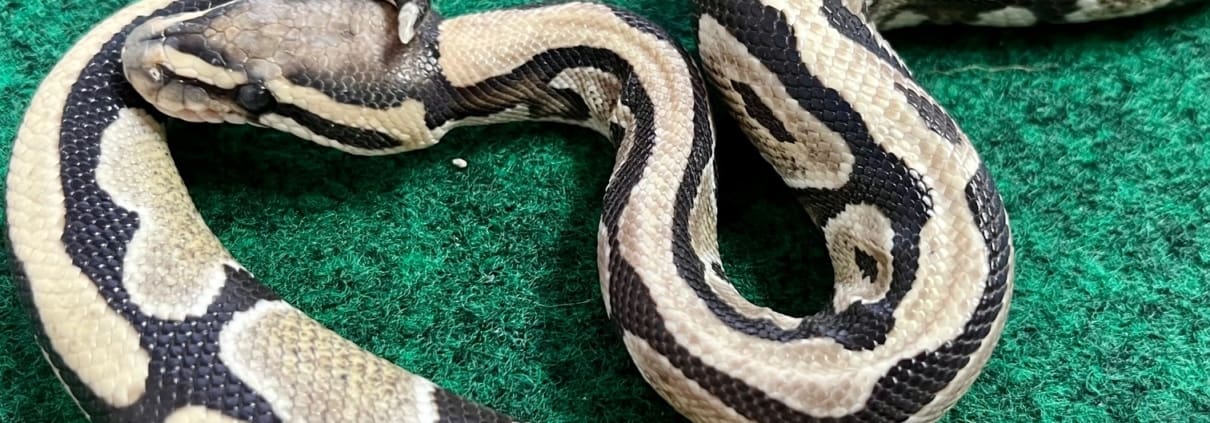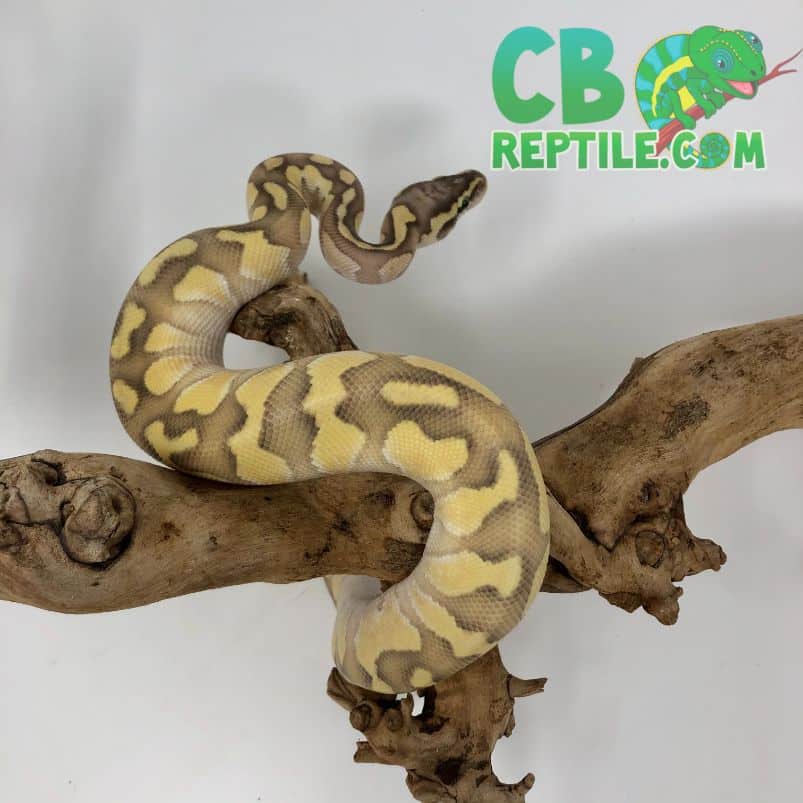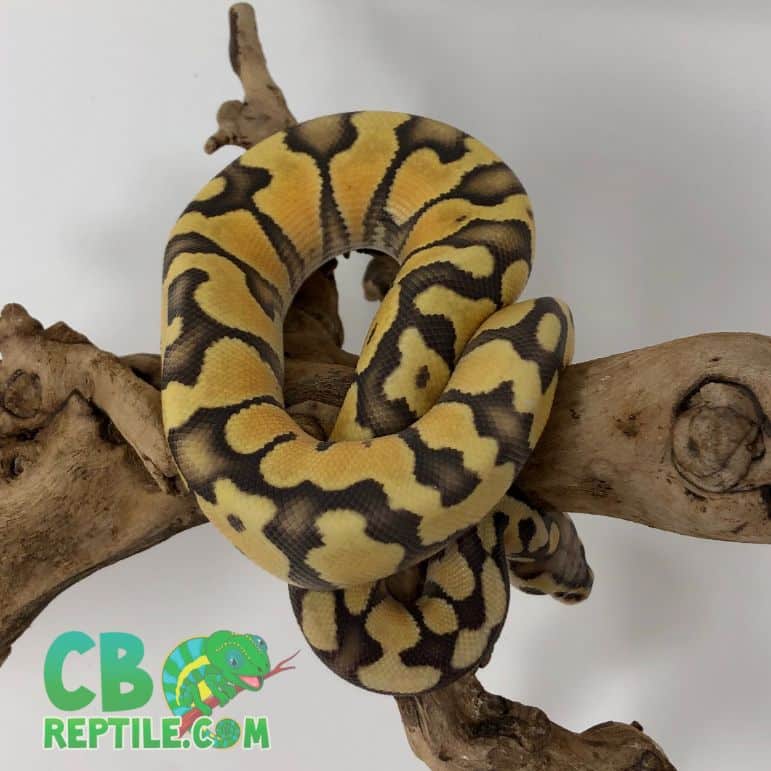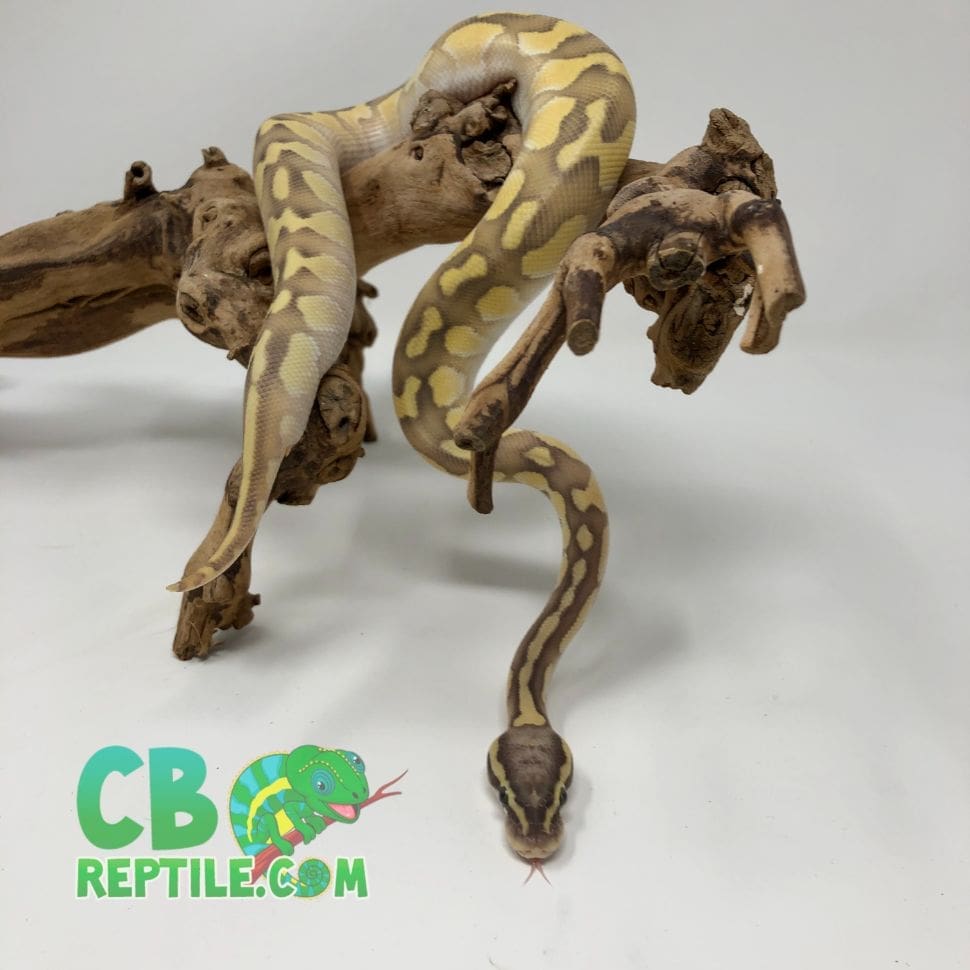
The Lifespan of a Ball Python

How long does a ball python live? Is a super common question and for good reason! We get attached to our pets, even our reptiles!
If you’re ready to start your journey with one of these wonderful reptiles, the best place to purchase a ball python is CBReptile.com, where quality and care come first.
How Long Do Ball Pythons Live?

Ball pythons are known for their impressive lifespans. In captivity, with proper care, they typically live 20–30 years, and some have even reached over 40 years! Compared to many other reptiles and pets, this makes them a lifelong companion and an excellent choice for dedicated keepers.
Their long lifespan is a reflection of their hardy nature, but it also means that owners must be prepared to provide consistent, quality care for decades.
Factors That Influence Lifespan
- Genetics: Healthy, captive-bred snakes from reputable breeders tend to live longer.
- Habitat: Proper enclosure size, secure hides, and enrichment all reduce stress and increase longevity.
- Temperature & Humidity: Consistent conditions support digestion, shedding, and overall health.
- Diet: A steady diet of appropriately sized frozen/thawed rodents keeps them strong and nourished.
- Veterinary Care: Regular checkups and quick responses to health concerns prevent issues from becoming severe.
Creating the Perfect Habitat for Longevity

Your python’s habitat plays a huge role in its lifespan. A properly set up enclosure keeps your snake stress-free and healthy.
Enclosure Size
- Hatchlings: 10–20 gallons
- Juveniles: 20–40 gallons
- Adults: 40+ gallons or larger
Décor & Hides
Ball pythons are naturally shy. Provide at least two hides, one on each side of the enclosure, along with branches, cork bark, and foliage. These elements mimic their natural environment and help reduce stress, leading to a healthier, longer life.
Temperature & Humidity
Ball pythons are ectothermic, meaning they rely on external heat sources. Without the right gradient, they may become stressed or sick. Aim for:
- Warm side: 88–92°F basking area
- Cool side: 75–80°F ambient
- Nighttime: No lower than 72°F
Humidity should remain between 50–60%, increasing to 65–70% during shedding. A humid hide with damp moss helps ensure complete sheds, which are vital for health and longevity.
Feeding for a Long, Healthy Life
Nutrition is one of the biggest influences on the lifespan of a ball python. Feed frozen/thawed rodents that are roughly the same width as the snake’s widest body point. This ensures proper digestion without overfeeding.
| Age | Food | Frequency |
|---|---|---|
| Hatchlings | Small mice | Every 5–7 days |
| Juveniles | Hopper mice or rat pups | Every 7 days |
| Adults | Medium rats | Every 10–14 days |
Overfeeding can cause obesity, while underfeeding leads to poor health. Balance is the key to supporting your python’s long life.
Handling & Bonding
While handling doesn’t directly affect lifespan, it does build trust and helps you monitor your snake’s health. Regular, gentle handling allows you to check for shedding issues, lumps, or other abnormalities early on. Always avoid handling for at least 48 hours after feeding.
Raising a Young Ball Python
The foundation of a long lifespan begins when your ball python is young. Starting with a well-bred, healthy hatchling makes all the difference. When you purchase a ball pythons for sale from CBReptile.com, you are investing in an animal that has been captive-bred, parasite-free, and well-started on frozen/thawed prey. This ensures a smoother transition into your home and a strong beginning for a long, happy life.
Why Buy From Real Breeders Like CBReptile.com?
The path to a long-living, healthy snake begins with where you purchase it. Many pet stores or mass suppliers offer snakes that may be stressed, ill, or reluctant feeders. These issues can shorten lifespan and create challenges for new owners.
CBReptile.com is family-run and has been breeding ball pythons for over a decade. They prioritize health, genetics, and customer support. Every snake is captive-bred, handled regularly, and started on reliable feeding routines before leaving their care. This makes them the best choice for anyone looking to ensure their ball python lives its longest, healthiest life.
Daily & Weekly Care Checklist
- Daily: Check temperatures, humidity, and water levels. Observe behavior.
- Weekly: Feed according to age, clean waste, and gently handle.
- Monthly: Deep-clean the enclosure and rotate enrichment décor.
Happy Keeper’s Checklist for a Long-Lived Python
- Secure, properly sized enclosure
- Two hides: one warm, one cool
- Temperature gradient of 88–92°F warm side, 75–80°F cool side
- Humidity 50–60% (65–70% during shed)
- Frozen/thawed prey sized to your snake’s girth
- Gentle, regular handling
- Start with a healthy, captive-bred python from CBReptile.com
